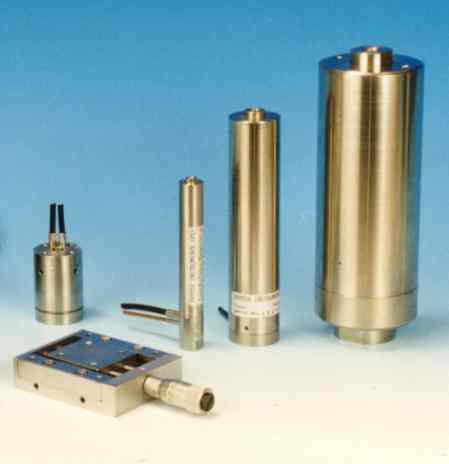Research
Our research focuses on unconventional actuators and robotics with image processing, whereby sensor technology and the fast processing of signals and algorithms are also included, due to the mechatronic-based and thus system-oriented point of view.
Within the main focus of research, namely that of actuators, the development and use of solid-state actuators is an important subject. Actuators based on piezoelectric ceramics and giant magnetostrictive rare-earth iron compounds can be employed for example for the reduction of undesired vibrations in machine tools, robots and all types of vehicles. In other projects the application fields of electrorheological and magnetorheological fluids are investigated. These are fluids whose viscosity can be changed specifically by applying an electric or magnetic field. Recently, the laboratory entered several new fields of activity that shall only be mentioned here briefly by the key words "distributed actuators" and "self-sensing actuators". In all cases the fundamental R&D tasks encompass broadband power amplifiers and the use of digital computers that not only carry out the control task itself but also the identification of processes and the automatic synthesis of controllers.
Research carried out in the field of robotics with image processing aims at improving the absolute pose accuracy of industrial robots. For efficient off-line programming of robots, their absolute pose accuracy must lie within the range of their repeatability. For this reason an inertial-photogrammetric measuring system has been developed with which any robot can be statically and dynamically measured and calibrated as well as specified according to ISO 9283. Another project combines the fields of robotics and image processing synergetically by automating CAD-supported off-line programming and the transmission of robot programmes with the help of a scene-adaptive pose correction algorithm. As were it a bridge between sensor technology and robotics, industrial image processing is integrated in several projects, mainly for tasks of quality assurance. One good example is the automated precise capture object geometry with the help of a robot-driven video camera.
The following list provides an impression of the R&D topics tackled at present.
Unconventional Actuators
 |
- Large-signal measuring technology for solid-state actuators and actuators based on electrorheological or magnetorheological fluids
- Modelling of large-signal transmission behaviour of solid-state actuators with hysteresis and creep
- Self-sensing actuators: use of inherent sensor effects in actuator materials
- "Intelligent" structures with distributed actuators
- Active noise control
- Investigation into new power amplifier concepts for actuator technology
- Establishing design rules for the layout of unconventional actuators
- Development of laboratory models and prototypes based on unconventional actuators (e.g. active engine bearings, vibration dampers, compact clutches, tactile arrays)
|
Robotics with Image Processing
 |
- Precise measuring of robot end-effector positions in space
- Improvement of static and dynamic pose accuracy of industrial robots
- Quick pose correction in robot cells
- 3D object measurement by moving a video camera with a robot arm
- Capture of coordinates, dimensions and positions with the robot as a coordinate inspection device
- Calibration of inertial measuring system by means of an industrial robot
- Adaptive visual inspection with new image-processing strategies
|
The projects are financed from regional or third-party funds (mainly from the Federal Ministry for Research and
Technology, the Deutsche Forschungsgemeinschaft, the European Union, industry). The degree of third-party
funding is on the order of 60...65%. Please contact us for further information
concerning specific projects.
|

